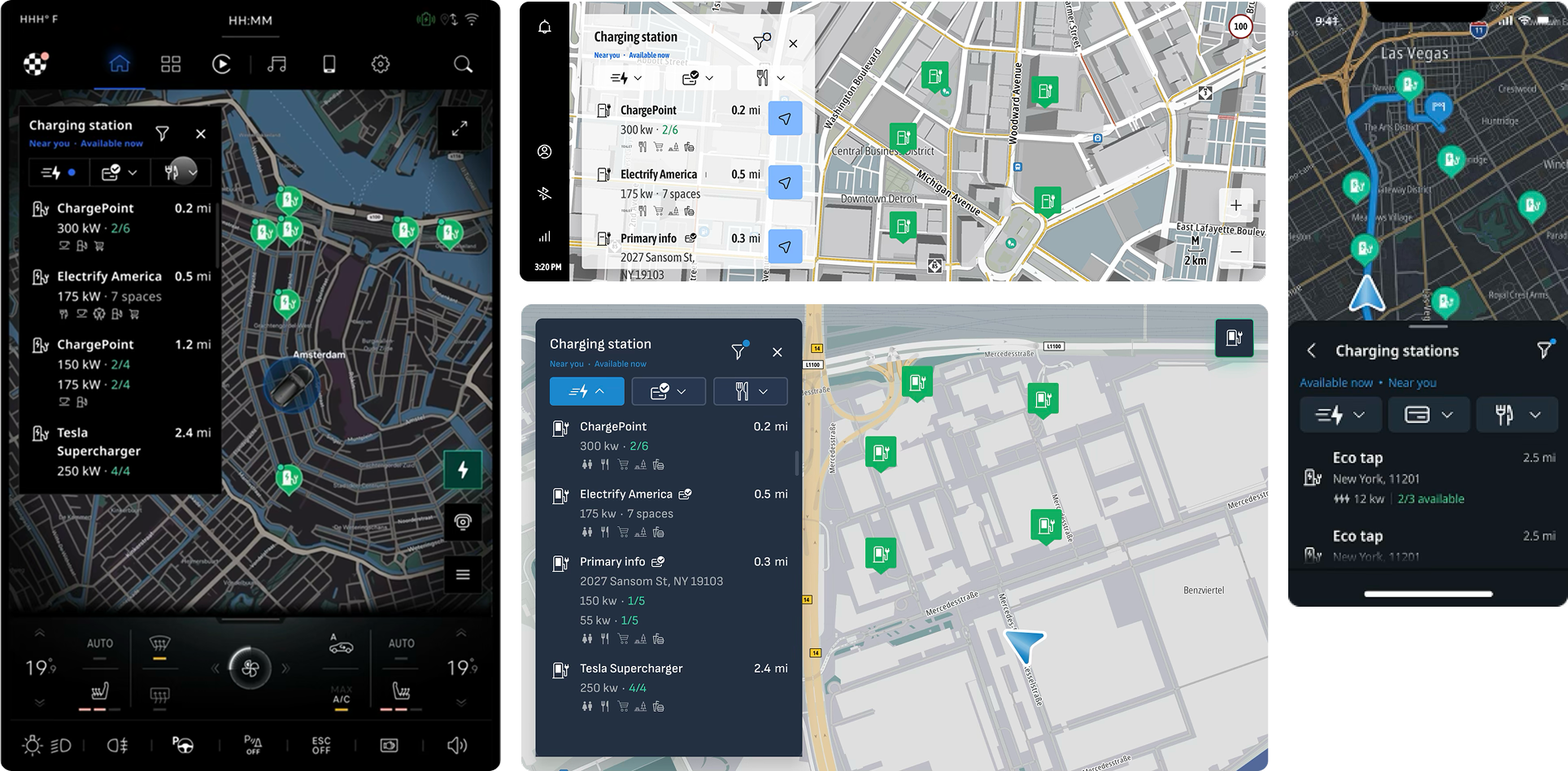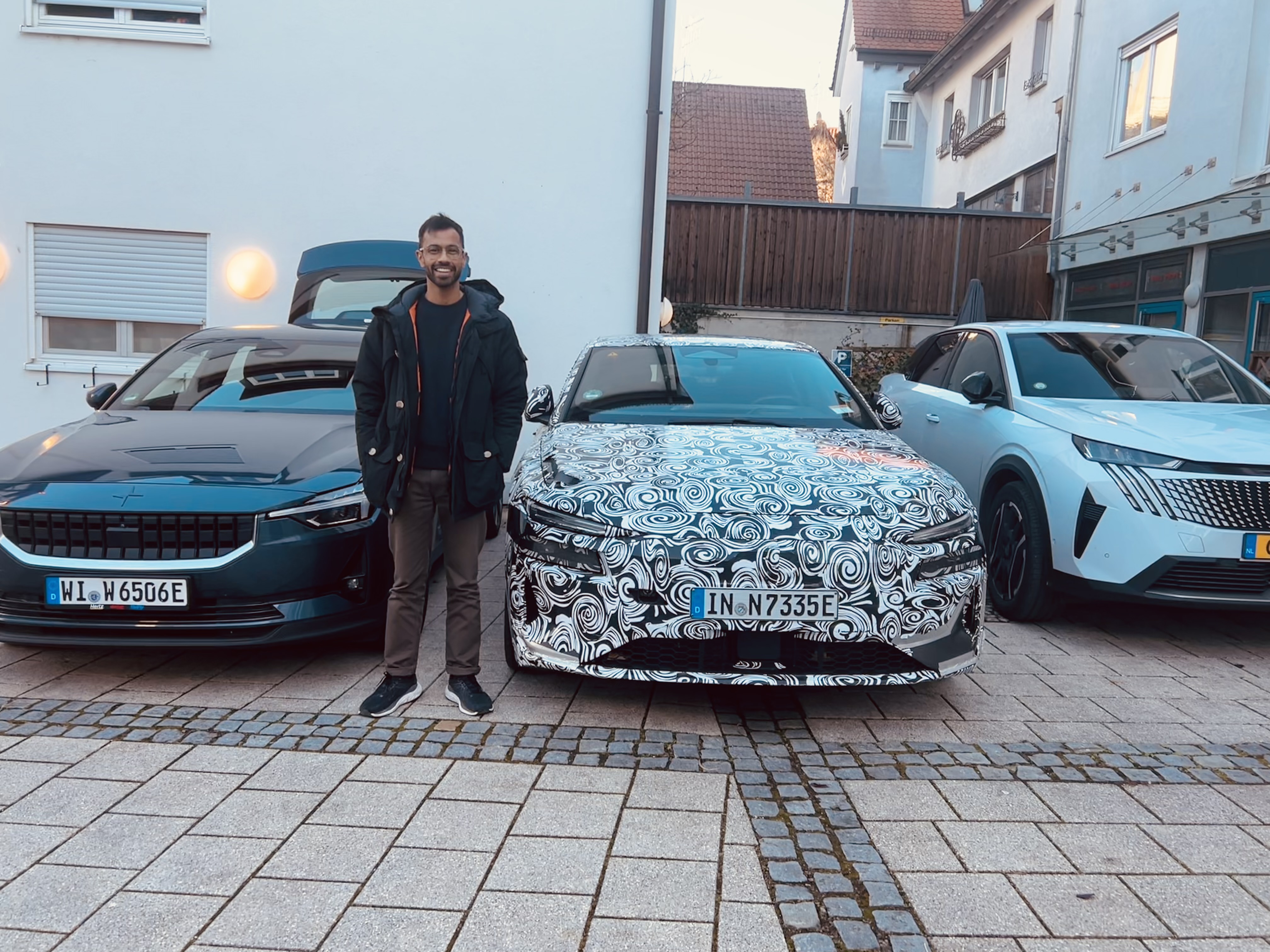TomTom EV Navigation
Staff Designer
As Staff Product Designer at TomTom, I led the end-to-end design of next-generation EV navigation experiences across mobile and embedded systems. The goal: reduce charging anxiety by creating a seamless, personalized, and predictable EV journey—from planning to plug-in.
I worked across multiple cross-functional teams, consulted with OEM clients, and contributed to evolving our internal design system to support consistent multi-platform rollout.
Key Design Challenges
- EV drivers lack confidence in public charging infrastructure
- Existing routing systems are generic—not tailored to EV behaviors/preferences
- OEM partners had diverse needs for branding and system integration
Project Overview
- EV Preference Setup Flow: Designed flexible, sync-enabled user preferences (e.g. favorite eMSPs/CPOs) across mobile and in-dash experiences
- Route Planning (LDEVR): Enabled drivers to plan and send personalized EV routes from phone to car—accounting for range, speed, and charger type
- Plug & Charge / AutoCharge Support: Designed adaptable flows that support different charging authentication protocols
- Community Feedback Integration: Introduced UX for crowdsourced charger reviews and reliability data
- OEM Collaboration: Delivered custom design solutions for Audi and Porsche until launch phase
User Mindsets: Designing for Real Charging Behaviors
In collaboration with our research team, we developed a charging mindset framework to map how EV drivers approach recharging based on two dimensions:
familiarity with context and confidence in range.
We identified four key mindsets:
Cautious, Journey-Oriented, Goal-Oriented, and Confident—each with distinct motivations and trust levels.
This framework became a shared reference across teams—from UX to product to engineering—anchoring our concepts in real-world behaviors and supporting scalable design decisions.
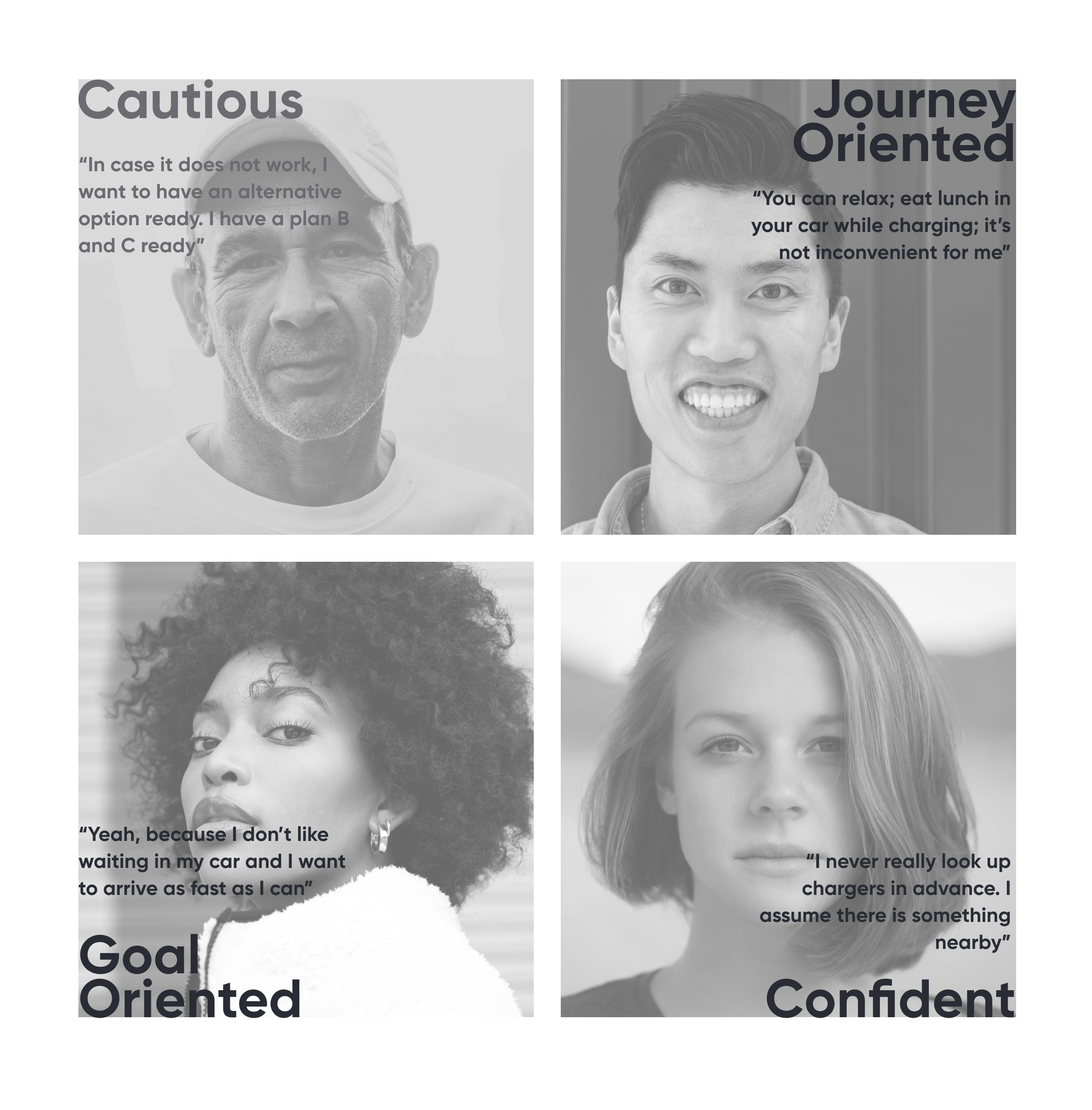
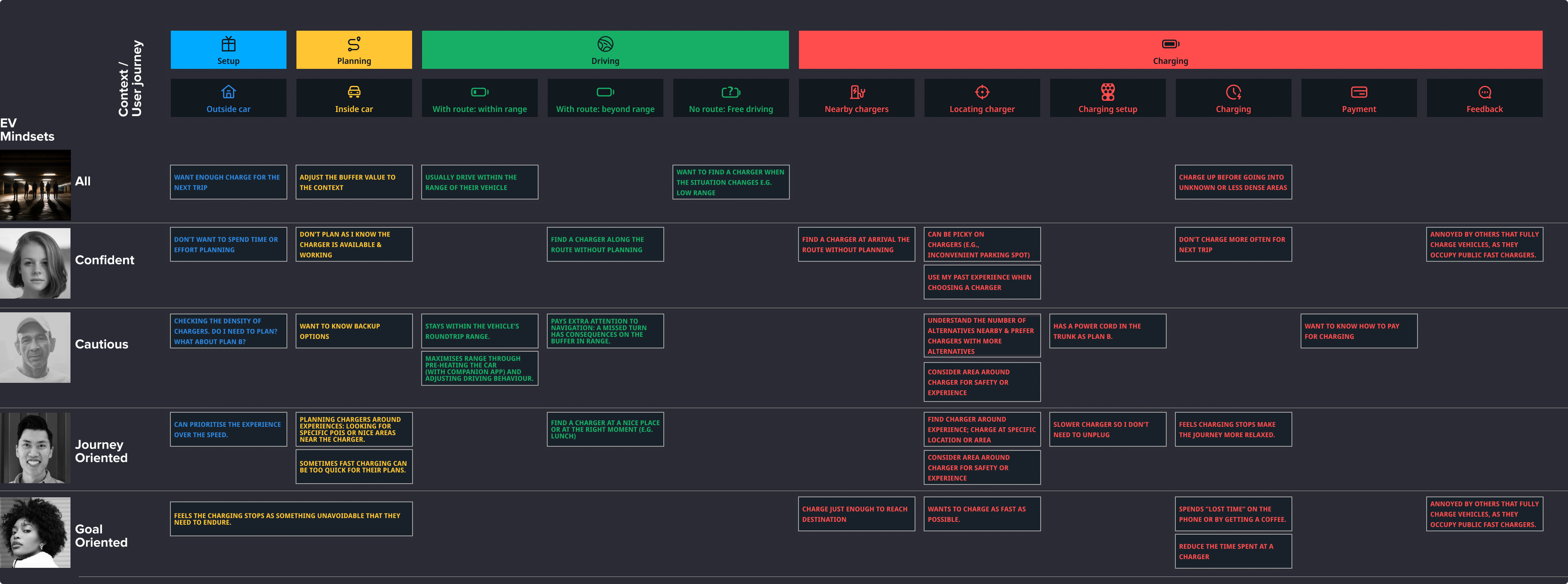
Field Benchmarking: Testing the Competition
To better understand how OEMs approach EV driving and charging experiences, I conducted hands-on benchmarking sessions using real vehicles available at local dealerships.
Working with colleagues, we explored in-car systems across multiple brands—focusing on route planning, charger discovery, and range feedback. I captured these findings in a series of informal video walkthroughs, hosted on a dedicated YouTube channel to document and share insights.
Feature Themes Aligned to Driver Needs
To guide product and design decisions across a fragmented EV journey, we defined a clear value proposition framework spanning four user contexts: Set Up, Planning, Driving, and Charging.
This structure helped us align features, prioritise workstreams, and articulate a cohesive story for both end users and stakeholders.
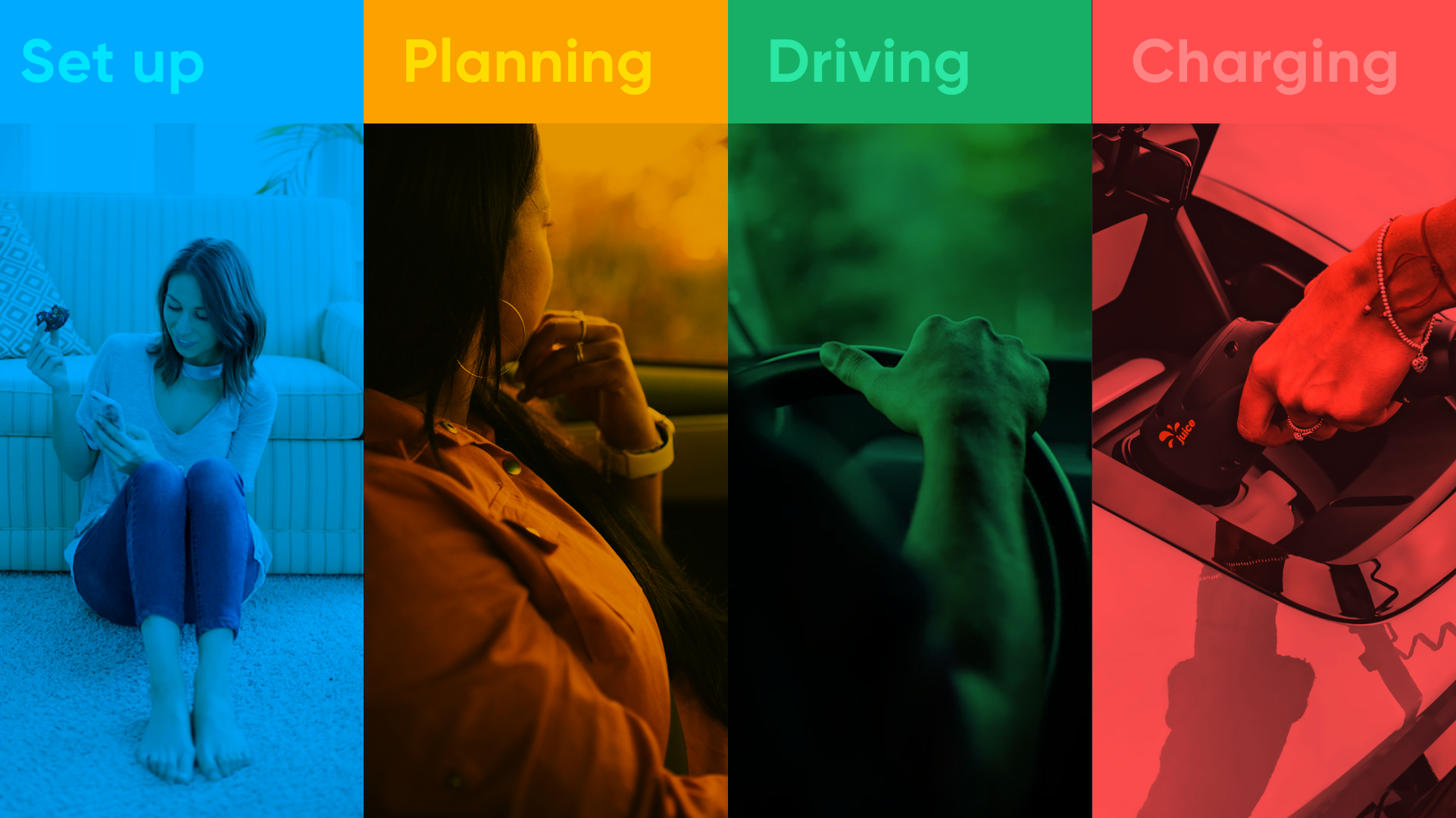
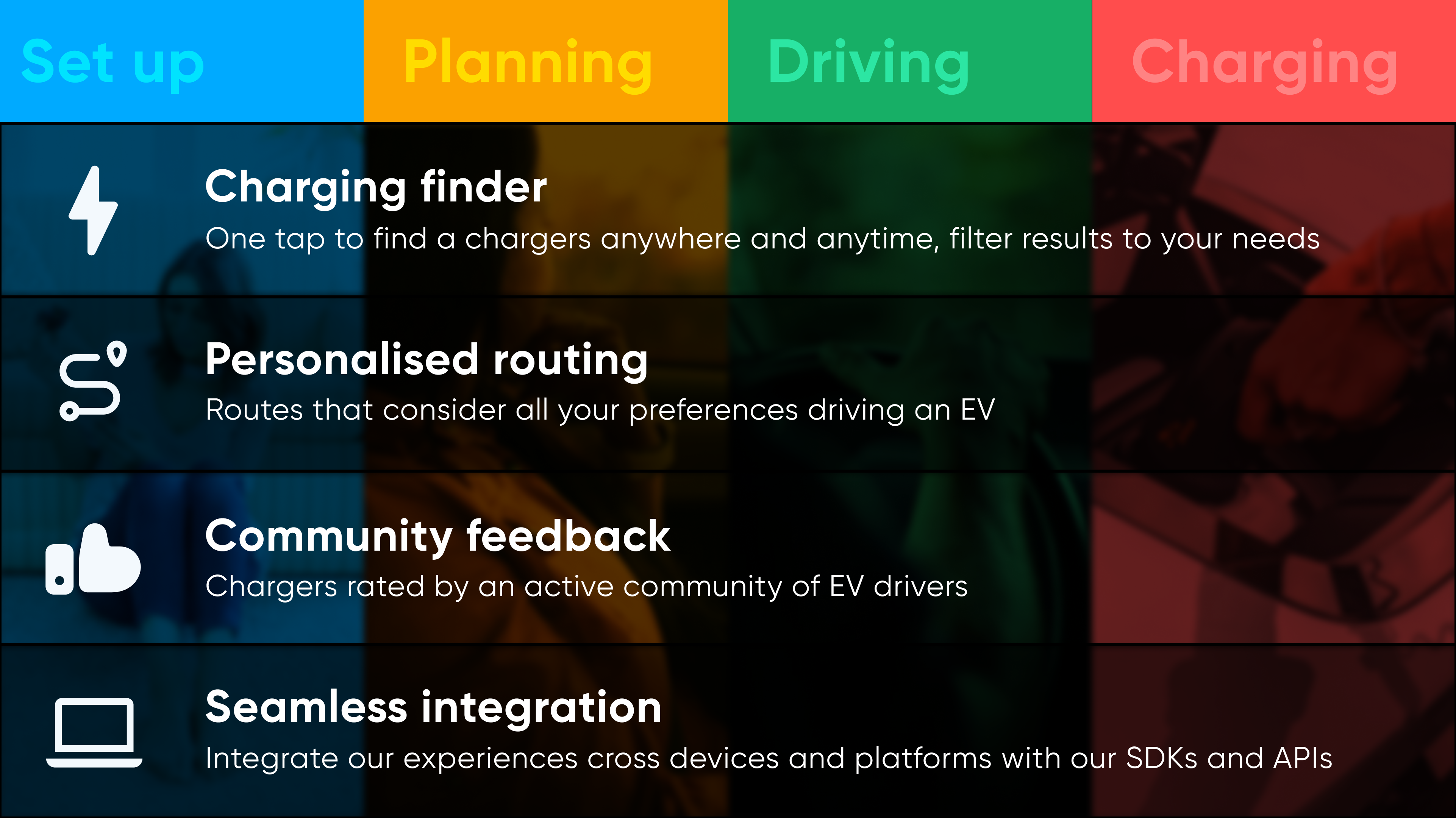
Set up
After gaining experience with EV charging, many drivers develop preferences for reliable operators and locations with nearby amenities like cafés or restaurants. Favorite chargers can be saved to help the system suggest similar options in the future. Preferences set in the companion app are synced with the vehicle and can be updated easily from the car settings.
Planning
Trip planning can be done comfortably from a mobile device. Drivers can choose a preferred route with charging stops and send it directly to their vehicle for a seamless start.
Driving
If plans change mid-drive—due to fatigue or a need to stop—alternative charging options can be found using the in-car app. Filters help surface ultra-fast chargers, and detailed information, including availability, reliability, amenities, and user reviews, helps in making the best choice. Navigation updates instantly once a new charger is selected.
Charging
Upon arrival, the app provides the exact charger location and nearby points of interest. After charging, users can leave feedback easily through the companion app, prompted at a convenient time.






